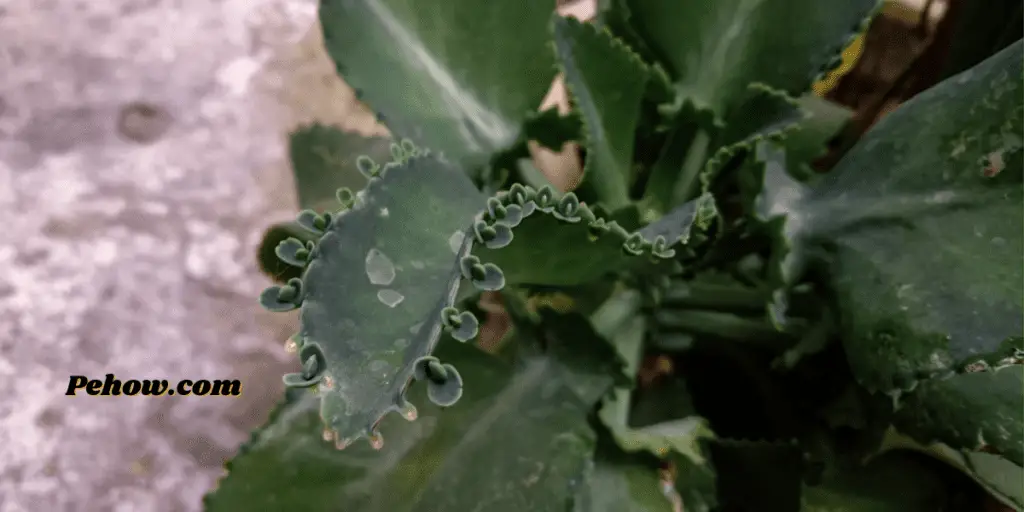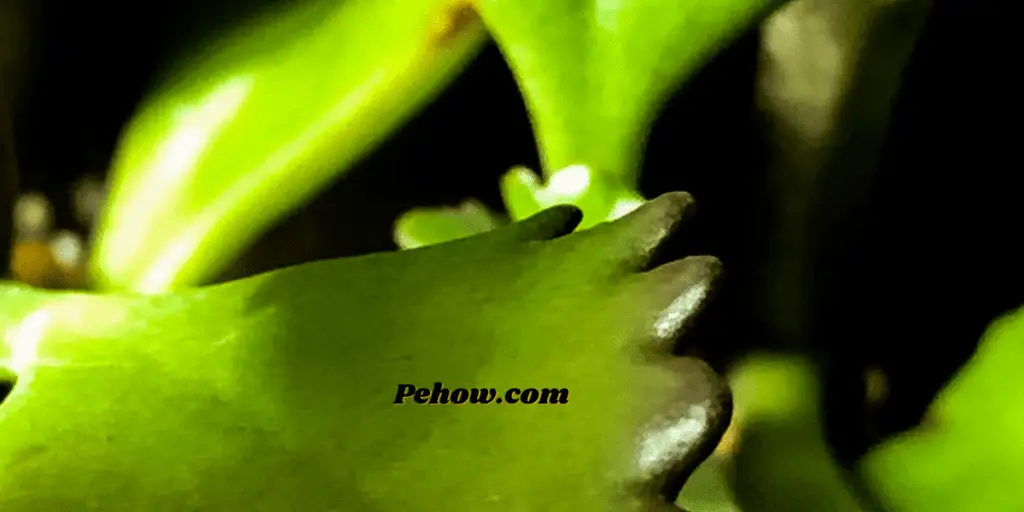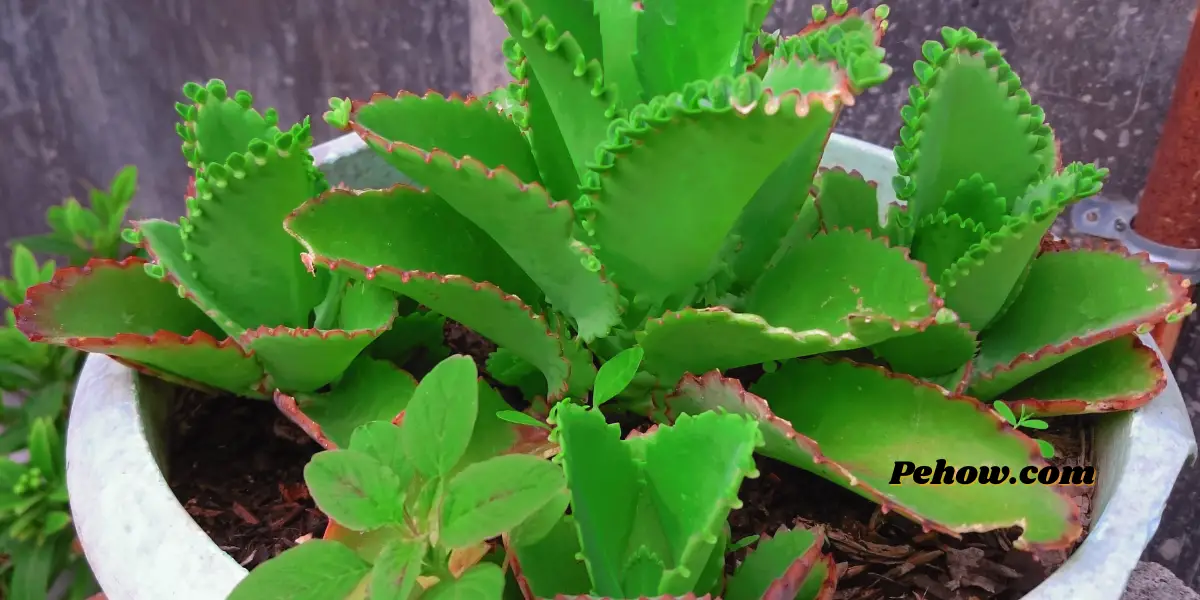Mother of thousands is popular as a houseplant and terrarium plant because it is easy to grow and care for. It is a succulent plant, which means it stores water in its leaves and can tolerate some neglect. However, mother of thousands does best with bright light and regular watering.
Mother of thousands in your garden or home will grow as a rosette of many small, fleshy leaves. The leaves are green with red or purple spots. The plant produces offsets, or miniature replicas of itself, which fall from the mother plant and root in the soil to form new plants.
It is really amazing when you look at the thousand mother tree you will be mesmerized by its beauty, this plant is mother of thousands and it’s one of the most beautiful plants that you can find. It has amazing colors and it’s really easy to grow, so if you’re looking for a plant that will make your garden or home look amazing, mother of thousands is the plant for you!
What Is A Mother Of Thousands Plant?

Mother of thousands plant (Kalanchoe delagoensis) is a succulent perennial in the family Crassulaceae. It is native to Madagascar, but has been introduced to other parts of the world and is now considered invasive in some areas. mother of thousands plants are characterized by their small white flowers that grow in clusters on the ends of their long, slender stems.
The leaves of mother of thousands plants are thick and fleshy, and they are often covered with small, sharp teeth. mother of thousands plants can reach up to 2 feet (0.61 m) in height, and their flowers can be up to 1 inch (2.54 cm) wide.
Mother of thousands plants are typically grown as houseplants, but can also be grown outdoors in warm climates. They are relatively easy to care for and do not require much water or fertilizer. However, mother of thousands plants can be poisonous if ingested, so care should be taken around small children and pets.
How do you take care of a mother of thousands plant?

Caring for the thousand of mother tree is a very simple task. Mother of thousands, plants can last a long time in your home or garden with a little care. here are tips for caring for mother of thousands plants:
1. Be careful with pests and diseases
One of the most important things to remember when caring for mother of thousands is to be on the lookout for pests and diseases. These can quickly harm or even kill your plant, so it’s important to take measures to prevent them from spreading. You can do this by using organic pest control methods, such as traps or natural sprays, and by regularly inspecting your plant for signs of problems.
2. Provide adequate lighting
Another important factor in caring for mother of thousands is to provide adequate lighting. These plants need a lot of light to thrive, so be sure to place them in an area that gets plenty of sunlight. If you live in a particularly dark home, you may need to supplement the light with grow lights.
3. Keep the soil moist
mother of thousands plants need to have moist soil in order to stay healthy. Be sure to water your plant regularly, and mist it occasionally if the air in your home is particularly dry. You can also add a layer of mulch to help keep the soil moist.
4. fertilize mother of thousands every two weeks
To keep your mother of thousands plant healthy, you’ll need to fertilize it every two weeks. You can do this by using a balanced fertilizer, such as 10-10-10, or by using a specific mother of thousands fertilizer. Be sure to follow the directions on the fertilizer package, as too much fertilizer can harm your plant.
5. Prune mother of thousands as needed
Pruning is an important part of caring for mother of thousands plants. You’ll need to prune your plant every so often to remove dead or dying leaves, and to encourage new growth. Be sure to use sharp, clean pruning shears to avoid damaging your plant.
What is mother of thousands good for?

mother of thousands is a plant that is often used for ornamental purposes. It can be used to add color and interest to gardens, as well as being a pretty houseplant. mother of thousands is also known to be easy to care for, making it a good choice for those who are new to gardening or plant care.
While mother of thousands is not typically known for its herbal or medicinal properties, some people believe that it can have benefits when used in teas or applied topically.
Is the mother of thousands plant poisonous?

Some people think that the mother of thousands plant is poisonous. However, there is no scientific evidence to support this claim. The mother of thousands plant is not considered to be poisonous to humans or animals.
If you think the mother of thousands plant is poisonous, you can test the plant to rule out doubts. here is how to test it:
- First, wash your hands, and mother of thousands plant thoroughly.
- Cut a small piece of mother of thousands plant and put it on your tongue.
- If you experience any burning sensation or irritation, discontinue the test immediately and consult a doctor.
- If you don’t experience any burning sensation or irritation, wait for 24 hours to see if there are any adverse effects.
- If you don’t experience any adverse effects after 24 hours, the mother of thousands plant is likely not poisonous.
How big does a mother of thousands get?

Mother of thousands plants typically reach a height of about 2-3 feet. However, they can grow up to 5 feet tall in some cases. The plant’s size will depend on several factors, including the variety and growing conditions. Mother of thousands is a relatively fast-growing plant, so it can quickly reach its full size if given the proper care.
Can mother of thousands survive winter?

mother of thousands is a tropical plant and will not survive if left outdoors in the winter. mother of thousands can be brought indoors and placed in a sunny window. mother of thousands will need to be watered more frequently indoors than when they are outdoors. mother of thousands can be propagated by taking stem cuttings in the spring or summer.
mother of thousands will bloom in the summer and fall. mother of thousands is not frost tolerant and should be brought indoors or protected when cold weather is expected. mother of thousands is a beautiful plant that makes a great addition to any indoor or outdoor space.
If you can’t bring it indoors in winter, here are some things you can do:
Wrap mother of thousands in a frost blanket or burlap
mother of thousands can be wrapped in a frost blanket or burlap to protect it from the cold weather. mother of thousands will need to be unwrapped when the weather warms up in the spring. mother of thousands can be replanted outdoors after the last frost.
Build a cold frame or mini greenhouse
If you can’t bring mother of thousands indoors during winter, you can build a cold frame or mini greenhouse to protect it from the cold weather. A cold frame is a simple wooden box with a glass or plastic lid that will help to keep the plants warm. You can also make a mini greenhouse out of a clear plastic container. Either way, make sure that the cold frame or mini greenhouse is large enough to fit all of your plants.
Use mulch
Mulching mother of thousands with straw, leaves, or pine needles can help to protect the roots from the cold weather. Be sure to remove the mulch in the spring so that the plant can get sunlight and air.
Provide a heat source
If you can’t bring mother of thousands indoors during winter, you can provide a heat source to help keep the plant warm. One way to do this is to place a heat lamp near the plant. You can also use a space heater to keep the area warm. Just be sure that you don’t put the heater too close to the plant, as this could damage the leaves.
Problems with mother of thousands and how to solve them

One of the problems of a thousand mothers is disease and insects. Some of the diseases that can affect a mother of thousands are root rot, stem rot, and leaf spot. pests include aphids, whiteflies, and mealybugs.
aphids
Aphids can cause problems with mother of thousands plants by sucking sap from leaves, which can lead to leaf yellowing, stunted growth, and even plant death. There are several ways to reduce the risk of aphid problems, including using floating row covers, spraying plants with water or insecticidal soap, and releasing ladybugs or lacewings into the garden.
Whiteflies
Whiteflies can cause mother of thousands plants to wilt, and if left unchecked, they can eventually kill the plant. To prevent whitefly problems, it’s important to keep the area around mother of thousands plants clean and free of debris. You can also reduce the risk of whiteflies by using yellow sticky traps or spraying plants with an insecticide.
Mealybugs
Mealybugs can cause mother of thousands plants to wilt and turn yellow. They can also lead to stunted growth and reduced flower production. Mealybugs are difficult to control once they’ve infested a plant, so it’s important to take preventive measures, such as using an insecticide or releasing ladybugs or lacewings into the garden.
Root rot
Root rot is a serious disease that can kill mother of thousands plants. The best way to prevent root rot is to make sure the plant has well-drained soil and to water it only when the soil is dry. If you suspect your plant has root rot, you should remove it from the garden and destroy it to prevent the disease from spreading.
Stem rot
Stem rot can affect mother of thousands plants in a number of ways, including causing the stems to turn yellow, wilt, and collapse. The best way to prevent stem rot is to make sure the plant has well-drained soil and to water it only when the soil is dry. If you suspect your plant has stem rot, you should remove it from the garden and destroy it to prevent the disease from spreading.
Leaf spot
Leaf spot is a disease that can cause mother of thousands plants to lose their leaves. The best way to prevent leaf spot is to make sure the plant has well-drained soil and to water it only when the soil is dry. If you suspect your plant has leaf spot, you should remove affected leaves and destroy them.
Aphids, whiteflies, and mealybugs can all cause problems for mother of thousands plants. The best way to prevent these problems is to keep the area around mother of thousands plants clean and free of debris. You can also reduce the risk of these pests by using an insecticide or releasing ladybugs or lacewings into the garden.
Why is my mother of thousands not growing?
There could be a number of reasons why your mother of thousands is not growing. One possibility is that the plant is not getting enough sunlight. Make sure to place it in a sunny spot, and if it still isn’t growing, you may need to get a new pot or replant it in soil that is more suited to its needs.
Another possibility is that the plant is not getting enough water. mother of thousands plants need to be kept moist, so make sure you are watering it regularly. If these solutions don’t work, it is possible that your mother of thousands plant is just not healthy and will need to be replaced.
Can you propagate mother of thousands from leaves?

Yes, you can propagate mother of thousands from leaves. To do this, cut a leaf off of the plant and then place it on top of some soil. The leaf will eventually produce roots and new plants. You can also propagate mother of thousands from stem cuttings. To do this, cut a piece of stem off of the plant and then place it in some soil. The stem will eventually produce roots and new plants.
mother of thousands plants need well-drained soil in order to grow properly. If the soil is too wet, the plant may develop root rot or stem rot. You can improve the drainage of your soil by adding some sand or gravel to it.
Final thoughts
Mother of thousands plants are susceptible to a number of pests and diseases. The best way to prevent these problems is to keep the area around mother of thousands plants clean and free of debris. You can also reduce the risk of these pests by using an insecticide or releasing ladybugs or lacewings into the garden.
I hope this article was helpful in teaching you how to care for mother of thousands plants.
So, Do you have mothers of thousand! If you follow these tips on how to care for mother of thousands plants, you should have no problem growing these beautiful plants in your garden.



